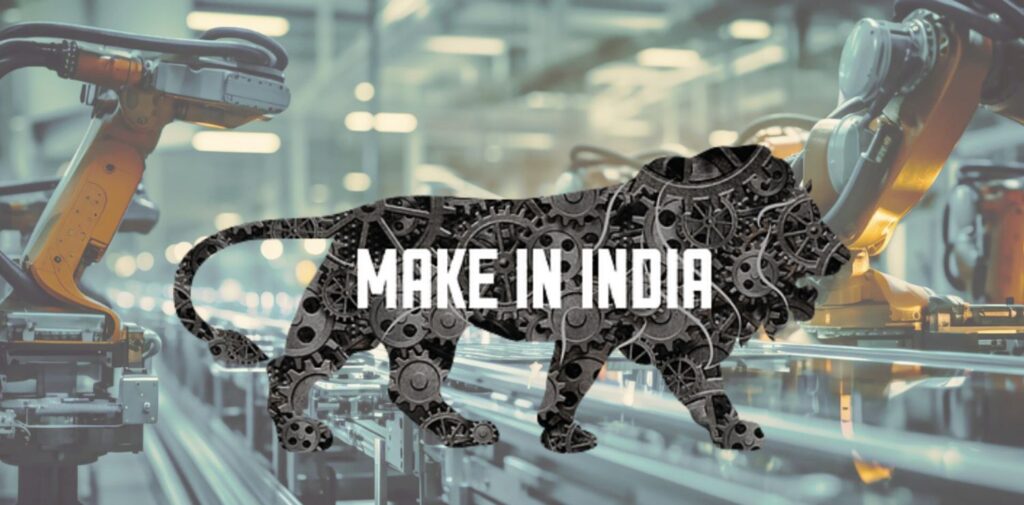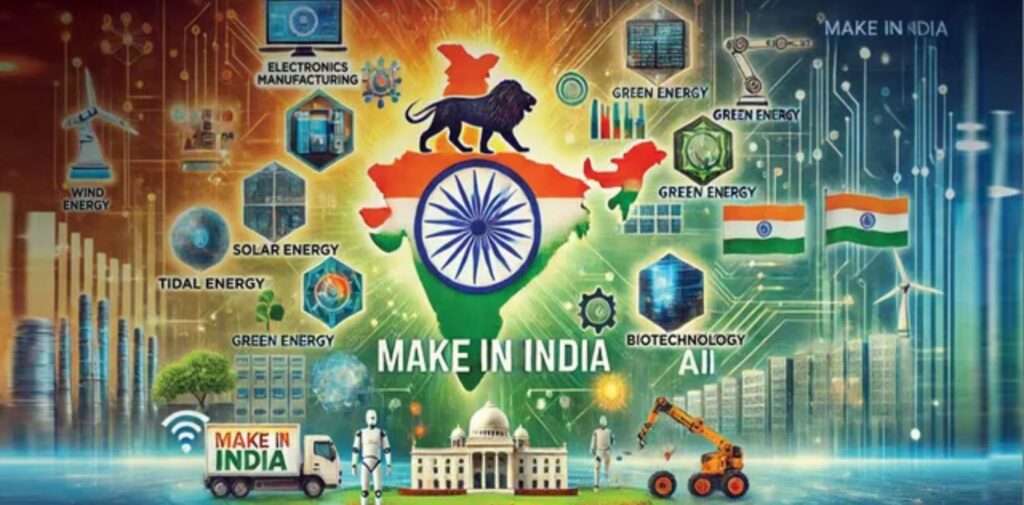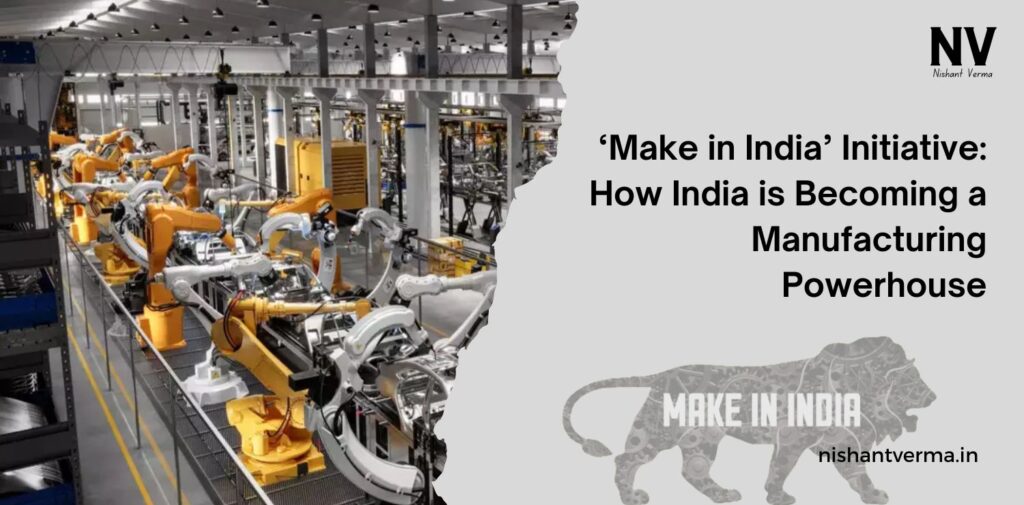In recent years, India has emerged as a key player in the global manufacturing landscape. This shift can be attributed to a transformative and ambitious initiative called Make in India Initiative, which was launched by the Indian government in 2014. The initiative has significantly impacted the nation’s manufacturing sector and is helping India build a strong industrial foundation for the future. In this article, we will explore how India is becoming a manufacturing powerhouse, highlighting the role of startups and companies that are driving this change.
What is Make in India?
Make in India is an initiative launched by Prime Minister Narendra Modi to encourage national and international companies to manufacture their products within India. The aim is to boost the manufacturing sector in India, create jobs, improve technological expertise, and reduce the country’s dependence on imports. The initiative targets several sectors, including automobiles, electronics, textiles, pharmaceuticals, and defense, to name a few.
The vision of Make in India is to transform India into a global manufacturing hub by creating a business-friendly environment and attracting foreign investments. It also focuses on fostering innovation, improving infrastructure, and enhancing skill development in various industries.

The Key Goals of Make in India
The Make in India initiative has several key goals that aim to transform the country’s manufacturing sector:
- Boosting Employment: One of the main goals of Make in India is to create millions of new jobs in the manufacturing sector, especially for the youth. This will help reduce unemployment rates and improve the living standards of Indian citizens.
- Attracting Foreign Investment: By creating a favorable business environment, India hopes to attract foreign investments. This includes simplifying regulations, offering tax incentives, and improving infrastructure.
- Increasing Production: The initiative aims to increase the production of goods within the country, reducing India’s reliance on imports and creating products that can be exported to other nations.
- Improving Infrastructure: To support manufacturing, India has been investing in improving infrastructure, including roads, ports, and logistics, which are essential for efficient production and distribution.
- Encouraging Innovation and R&D: By fostering innovation and supporting research and development, India hopes to become a leader in advanced technologies and manufacturing processes.
How Make in India is Transforming the Economy
India’s manufacturing sector has seen impressive growth under the Make in India initiative. In the past decade, the country has witnessed a surge in industrial production, increased exports, and enhanced technological capabilities. Let’s look at some of the ways in which Make in India is transforming the economy.
Increased Investment in Manufacturing
One of the most noticeable outcomes of the Make in India initiative has been the surge in foreign direct investment (FDI) in the manufacturing sector. India has become an attractive destination for international companies looking to set up production units. For example, tech giants like Apple have established manufacturing units in India, creating jobs and boosting the local economy. In the automobile sector, global players such as Toyota, Ford, and Hyundai have expanded their manufacturing facilities in India, thanks to favorable policies under Make in India.
Growth of the Startup Ecosystem
India’s startup ecosystem has also flourished under the Make in India initiative. A wave of innovation has been seen in various manufacturing sectors, with young entrepreneurs launching new companies that cater to both domestic and international markets. From electric vehicle startups like Ather Energy and Ola Electric to clean energy companies like ReNew Power, these startups are driving technological advancements in manufacturing and contributing to India’s overall growth.
One of the standout examples of the power of Indian startups is Bharat Forge, which has grown to become a global leader in forging technology. This company started in India and now supplies products to the automotive, aerospace, and defense industries worldwide. It’s a testament to the potential that India holds in the manufacturing space.

Creating a Skilled Workforce
The success of Make in India is directly linked to the availability of a skilled workforce. To ensure the growth of manufacturing, India has been focusing on training and upskilling its workforce. Initiatives like Skill India and Pradhan Mantri Kaushal Vikas Yojana (PMKVY) are aimed at equipping young people with the skills needed for modern manufacturing jobs.
By offering technical education and vocational training, India is making sure that its workforce can meet the demands of advanced industries, from robotics and automation to precision engineering. The growth of startups like Giva, which specializes in jewelry manufacturing, is an example of how India’s skilled workforce is helping local businesses thrive.
Boosting Domestic Production and Reducing Imports
India’s dependence on imports has been a long-standing issue, especially in sectors like electronics. However, Make in India has led to an increase in domestic production. India has witnessed the rise of local companies that are manufacturing goods that were once imported. For example, Micromax, Lava, and Intex are now among the leading smartphone manufacturers in India, contributing to the “Make in India” vision.
The Indian government has also implemented measures like the Production-Linked Incentive (PLI) scheme to encourage domestic production in key sectors such as electronics, automotive, and pharmaceuticals. This has led to the establishment of local production units by companies such as Samsung, Xiaomi, and Foxconn, which have set up manufacturing plants in India, further reducing the need for imports.
Technological Innovation and Sustainability
India is not only focusing on quantity but also quality and innovation. The country is increasingly adopting new technologies like artificial intelligence (AI), robotics, Internet of Things (IoT), and 3D printing in manufacturing processes. Companies are using these technologies to increase productivity, reduce costs, and improve the quality of products.
Startups like Ather Energy, which manufactures electric scooters, are at the forefront of this technological revolution. They are not only promoting sustainable transportation but also creating a greener future for India.

The Role of Indian Companies and Startups
India is home to several companies and startups that are driving the growth of the manufacturing sector. These companies are transforming industries, creating jobs, and promoting innovation. Here are some notable examples:
- Tata Motors: A part of the Tata Group, Tata Motors is one of India’s leading automobile manufacturers. It produces a range of vehicles, including passenger cars, trucks, and electric vehicles. Tata Motors has embraced innovation and sustainability, contributing to India’s vision of becoming a global manufacturing hub.
- Mahindra & Mahindra: Another giant in the Indian automotive sector, Mahindra & Mahindra has expanded its operations and is increasingly focusing on electric vehicles, tractors, and commercial vehicles. The company’s commitment to sustainability and innovation has made it a key player in India’s manufacturing sector.
- Ola Electric: Ola Electric is a startup that has revolutionized India’s electric vehicle market. By manufacturing electric scooters and setting up large-scale production facilities, Ola Electric is contributing significantly to the country’s vision of a sustainable future.
- Zomato: While Zomato is primarily known for its food delivery services, the company is also driving innovation in the food processing and packaging industry. Its efforts to make food delivery more efficient and sustainable are helping to create a new industry in India.
- Bharat Forge: This company is an example of India’s growing influence in the global manufacturing space. It produces products used in a range of industries, from automotive to aerospace, and is a major supplier to some of the world’s largest companies.
Conclusion: Make in India Initiative
India is quickly becoming a manufacturing powerhouse, thanks to the Make in India initiative. With the support of innovative startups, skilled labor, and growing investments, India is transforming its manufacturing sector and positioning itself as a global leader. As the country continues to grow, the Make in India vision will likely drive the creation of new jobs, foster technological advancements, and improve the standard of living for millions of people.
With companies like Tata Motors, Mahindra & Mahindra, and new-age startups like Ola Electric leading the charge, India is well on its way to achieving its ambitious goal of becoming the manufacturing hub of the world. As a nation, India is proving that it has the potential, talent, and ambition to reshape the future of global manufacturing.




